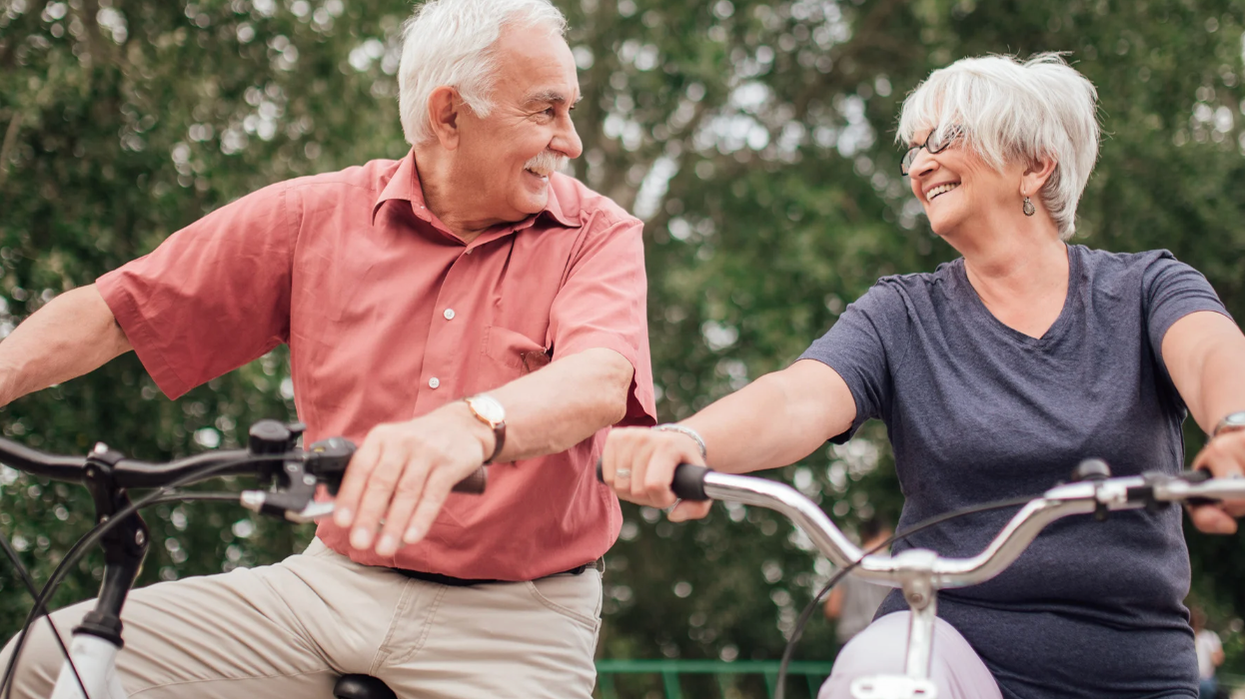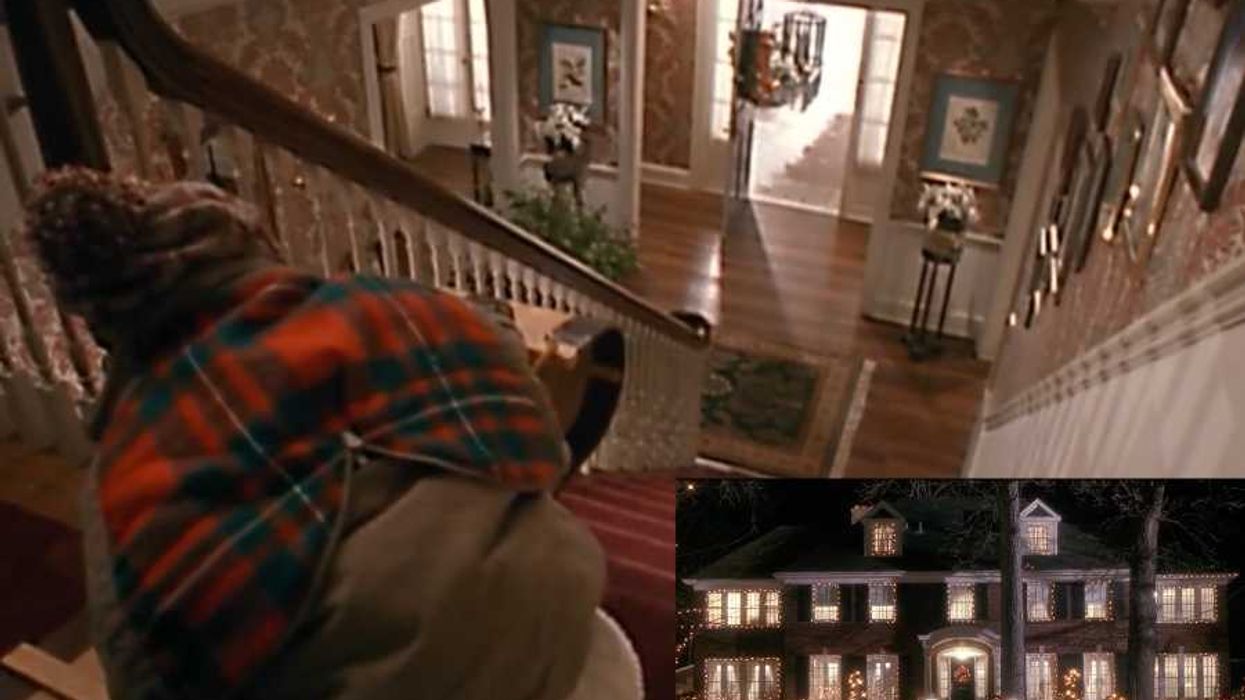The Emmy ballots are out and, naturally, there are some surprises that come with them. What’s not all surprising, though, is that the performer categories are light on entries for actresses playing queer women on TV. Shows like Orphan Black, Orange is the New Black, You Me Her and The 100 give us Lead Actress contenders who play queer characters, and there are a handful of hopefuls in Supporting categories from shows like Jessica Jones, Sense8, OITNB and Grey’s Anatomy. But really, it’s an awfully small number given the fact that there are over 2,000 performer entries on the ballot.
In some ways, this Emmys overview serves as a snapshot of the entire television landscape, and it unfortunately reaffirms something we already know: There simply aren’t enough queer women on television. But it turns out being left off some awards ballot is far from the worst thing that’s happened to queer female characters on TV this year.
The year of our Lord 2016 has been a tough one for queer women on television. We’ve been stabbed, strangled, killed by disease, poisoned and shot. Accidentally. More than once. For the most part, these deaths have been on shows where, allegedly, “Anyone can die.” But that’s starting to sound a lot like code for “Anyone can die, but if there’s a lesbian or a woman or any character who isn’t white, that’s who’s going to die.” (Breathe a sigh of relief, straight, white male leads; there’s never a witch too far away to perform a resurrection.)
Since January, nearly two dozen LGBT women have died on television, carving deeply into the already low numbers of representative queer ladies. It isn’t simply a case of a bad year, either. Autostraddle did the hard work of tallying the butcher’s bill and found that over the last four decades, only 383 lesbian or bisexual characters have made it on air alongside more than 18,000 straight characters. In 40 years. And 95 of them died. That means your odds of surviving as a queer woman on TV are only slightly better than making it through the Black Death in 14th century Europe.
But the prevalence of tropes like “Bury Your Gays” and “Dead Lesbian Syndrome” are only a symptom of TV’s LGBT representation problem. The larger issue at hand is the quality of representation. The Autostraddle data crunch also revealed that since 1976, only 193 of the 1,586 scripted shows available in the U.S. have even had lesbian or bisexual characters.
[quote position="full" is_quote="true"]To be queer and love television is often to feel invisible, unseen, unconsidered, secondary, supporting. Most of the time we are a part someone else’s story, not the leads of our own. [/quote]
The truth is that these characters are typically killed off because they were written, positioned and designed to be secondary and, by extension, to be expendable. It’s easy to write someone out that was never a fundamental part of the story to begin with.
The catalyst for Autostraddle’s deep dive was the death of a much-loved lesbian character on The 100, Commander Lexa. Immediately following Lexa’s death the show’s queer fandom rose up and spoke out, which put a lot of internet attention on the virtual graveyards filled with LGBT characters. And in response to the outrage, a few even decided to take the conversation beyond Tumblr and Twitter and into the rooms where the fates of characters are actually decided. Writers and producers Noelle Carbone, Sonia Hasko and Michelle Mama joined together with behavioral therapist Gina Tass to create “The Lexa Pledge,” aimed at making creators more aware of the importance of LGBT characters and their treatment onscreen.
The Lexa Pledge addresses queer baiting—the practice of including LGBT characters to bring in an underrepresented audience and then underserving or misleading them—and the damaging effects of killing off LGBT characters when so few exist. The goal is to give queer characters considered and meaningful arcs, and to avoid using their lives and deaths solely to further the plots of straight characters. In short, it gets to the heart of what we really need from television: better, more responsible representation.
This kind of acknowledgment is vital, especially since straight, white men are still the ones defining the television landscape. Until we can find our way into more writers’ rooms and directors’ chairs and showrunner thrones we’ve got to make sure that the people shaping our narratives for us understand the responsibility that comes with this work. Networks and studios need to understand that queer representation is limited, important and powerful, and that taking away one of these characters is never insignificant. After all, if you kill a few hundred characters out of a pool of 18,000, there are thousands more to find. Take a few hundred characters out of a pool of 383 and there’s nothing left.
The Lexa Pledge isn’t the only way to making representation meaningful, though. A simple way to measure whether or not a script is treating its LGBT characters with sensitivity is by putting it to the Vito Russo test. Its name comes from the GLAAD’s co-founder, who authored a book called The Celluloid Closet, a key text on LGBT representation in Hollywood. Like the Bechdel test—which assesses representation of women on screen—the Russo test has three criteria:
1) The film must have a character that is lesbian, gay, bisexual and/or transgender
2) Said character’s sexuality must not be their only or most defining characteristic or character trait
3) The character must have a significant impact on the plot. As the test says, "They are not there to simply provide colorful commentary, paint urban authenticity, or (perhaps most commonly) set up a punch line.” Simply put, “The character should 'matter.'"
It shouldn’t come as much of a surprise that the vast majority of films and television shows fail the Vito Russo test. Even where LGBT characters are present, they’re rarely included in meaningful, integral ways. It’s distressing, because even though there is more TV to watch than any one human should be legally allowed to consume, I won’t see myself unless I do my research, shake the lesbian phone tree and find out which shows have queer female characters—at least for the season. To be queer and love television is often to feel invisible, unseen, unconsidered, secondary, supporting. Most of the time we are a part someone else’s story, not the leads of our own.
Fortunately, there’s proof we can do better. Lost Girl gave us five seasons with Bo Dennis, the bisexual succubus lead, and a host of other LGBT characters. Skins and Buffy the Vampire Slayer both had strong and central lesbian and bisexual characters (or did, before they succumbed to trope-y destinies and died). The L Word gave us six (five) seasons that flew in the face of conventional television with an entire ensemble of lesbian and bisexual women. It was deeply imperfect (and the theme song was worse than the feeling you get when you accidentally butt-dial an ex) but it was important and remains important.
[quote position="right" is_quote="true"]Over the last forty years, only 383 lesbian or bisexual characters have made it on air alongside more than 18,000 straight characters. In forty years. And 95 of them died. [/quote]
And in a revolutionary twist, aforementioned shows like Orange is the New Black, Orphan Black and SyFy’s Wynonna Earp are built around dynamic queer female characters. There is an audience for this kind of programming, and the great news for studios is that they’re devoted and they show up. All they ask for in return are stories that speak to them, that give them their own meaningful place on the human tapestry of culture and storytelling. To borrow a phrase from a film genre that is among the worst when it comes to LGBT representation, “With great power comes great responsibility.”
The stakes are high. We live in a country where being different is still dangerous, where kids are raised on self-loathing and the fear of disappointing. But we also live in a country where the media has power and where popular culture has the ability to shape and change our worldview. It’s not just the LGBT community that needs to see fairly portrayed LGBT people. It’s everyone—those who love us, who worry about us, who hate us, who don’t understand us, who think they might be us. There’s an opportunity for change in television, but it requires the understanding that representation in the form of presence isn’t enough. We want to be a part of the story, to see characters that we identify with being heroic, leading happy lives, and maybe falling in love—just like every other person who’s ever watched television or a film or opened book.
It’s time for a queer girl to pick up the sword or light saber or bow and arrow and be her own damn hero, to be so compelling, so central, so imperative that she can’t be killed off, because she is the story. Because it’s actually not “just TV”—it’s lives.
UPDATE: 1/21/16, 1:10 PM PST—This post originally designated Gina Tass as working with the Trevor Project, but that was incorrect.
















 Otis knew before they did.
Otis knew before they did.